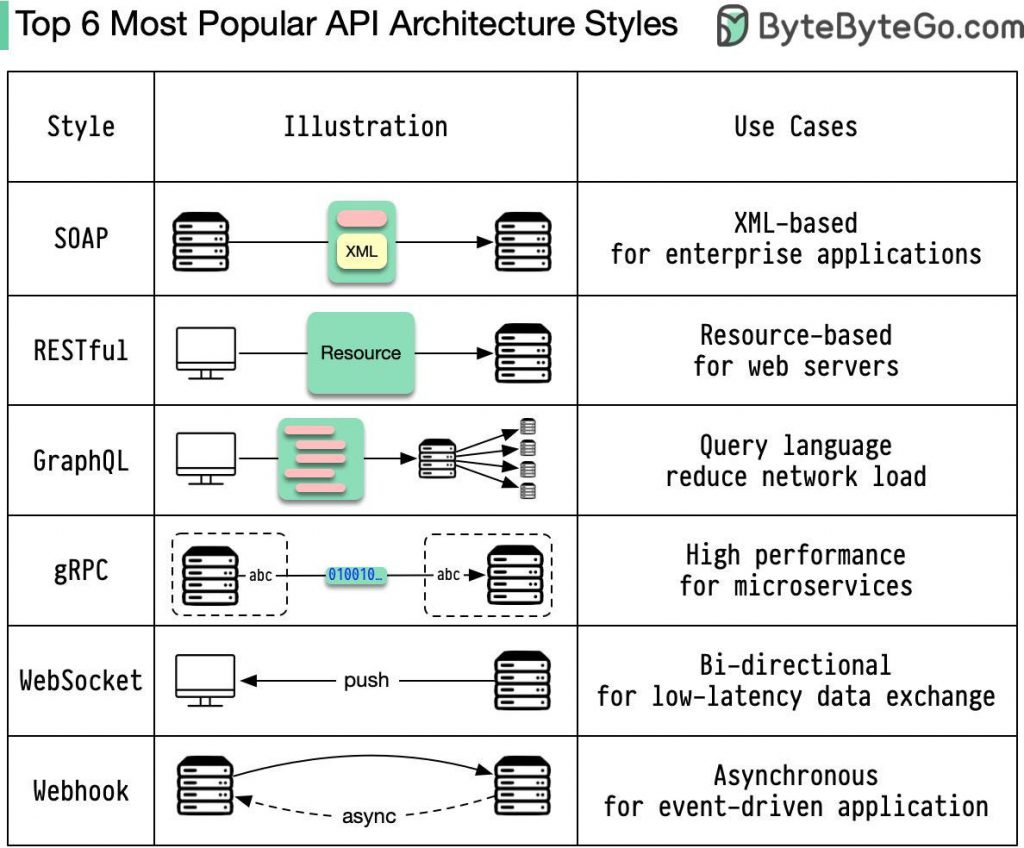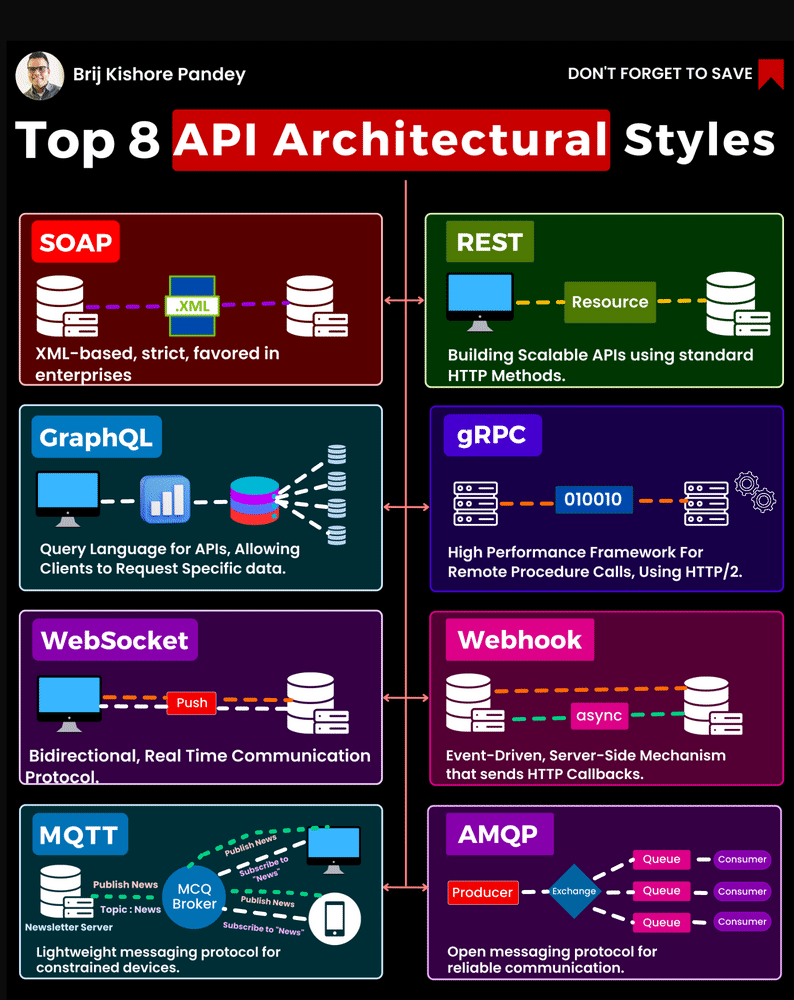
API architectural styles define how different components of an application interact with each other through APIs (Application Programming Interfaces). Here are some of the top API architectural styles:
- REST (Representational State Transfer):
- REST is a widely adopted architectural style for designing networked applications.
- It emphasizes a stateless client-server interaction, where the server’s resources are represented and manipulated using standardized HTTP methods (GET, POST, PUT, DELETE).
- Resources are identified by URLs (Uniform Resource Locators), and data can be exchanged in various formats like JSON or XML.
- GraphQL:
- GraphQL is an API architectural style developed by Facebook that provides a more flexible and efficient alternative to REST.
- Clients can request exactly the data they need, reducing over-fetching and under-fetching of data.
- The server defines a schema, and clients query for specific fields and relationships within that schema.
- SOAP (Simple Object Access Protocol):
- SOAP is a protocol for exchanging structured information in the implementation of web services.
- It relies on XML for message format and can be transported over various protocols, including HTTP, SMTP, and more.
- SOAP services have predefined operations and structures, making it more rigid compared to REST.
- JSON-RPC:
- JSON-RPC is a remote procedure call (RPC) protocol encoded in JSON.
- It allows clients to invoke methods on remote servers using JSON-based messages over HTTP or other transport protocols.
- gRPC:
- gRPC is a high-performance RPC (Remote Procedure Call) framework developed by Google.
- It uses Protocol Buffers (protobuf) as the interface definition language and supports multiple programming languages.
- gRPC provides features like bi-directional streaming, authentication, and load balancing.
- WebSocket:
- WebSocket is a protocol that enables full-duplex communication channels over a single TCP connection.
- It allows for real-time, interactive communication between clients and servers.
- WebSockets are often used for applications requiring continuous data updates, such as chat applications and online games.
- OData (Open Data Protocol):
- OData is a protocol for building and consuming RESTful APIs.
- It focuses on exposing and consuming data as resources, supporting filtering, sorting, and querying of data.
- OData aims to standardize the way data is accessed and manipulated over the web.
- Falcor:
- Falcor is a JavaScript library developed by Netflix for efficient data fetching.
- It allows clients to request specific pieces of data from a single endpoint, reducing the number of network requests.

here is a table summarizing the key differences between REST, SOAP, GraphQL, and gRPC:
| Feature | REST | SOAP | GraphQL | gRPC |
|---|---|---|---|---|
| Messaging style | HTTP | XML-based | Query language | HTTP/2 |
| Data format | JSON, XML | XML | JSON, GraphQL | Protobuf, JSON |
| CRUD operations | GET, POST, PUT, DELETE | GET, POST, PUT, DELETE | Query | RPC |
| Specification | RFC 2616 | WSDL | None | protobuf |
| Performance | Good | Fair | Good | Excellent |
| Complexity | Simple | Complex | Simple | Complex |
| Security | Good | Good | Good | Good |
| Flexibility | Flexible | Rigid | Flexible | Flexible |
| Suitability | Most applications | Complex applications | Complex applications | High-performance applications |
Here is a more detailed explanation of the differences between these API architectural styles:
- REST is based on the HTTP protocol and uses a set of well-defined verbs (GET, POST, PUT, DELETE) to perform CRUD operations on resources. RESTful APIs are easy to understand and use, and they are well-suited for a wide variety of applications.
- SOAP is a more complex API architectural style that uses XML to define the messages that are exchanged between the client and server. SOAP is more verbose than REST, but it can be used to exchange complex data types. SOAP is often used in enterprise applications where security and reliability are important considerations.
- GraphQL is a newer API architectural style that is gaining popularity. It is a query language that allows clients to request exactly the data they need from the server. GraphQL is more efficient than RESTful APIs, and it can be used to build more complex applications.
- gRPC is a high-performance API architectural style that is based on the RPC (Remote Procedure Call) paradigm. gRPC uses HTTP/2 to transport messages, and it supports a variety of data formats, including Protobuf and JSON. gRPC is often used in microservices architectures where high performance and scalability are important considerations.
Latest posts by Rajesh Kumar (see all)
- What is Mobile Virtual Network Operator? - April 18, 2024
- What is Solr? - April 17, 2024
- Difference between UBUNTU and UBUNTU PRO - April 17, 2024


I’m truly grateful for stumbling upon this blog on top API architectural styles. The way you’ve demystified the jargon and presented each style’s pros and cons is commendable. It’s evident that a lot of effort went into crafting this article. Thank you for enriching the developer community with your knowledge!
I really like your ideas!